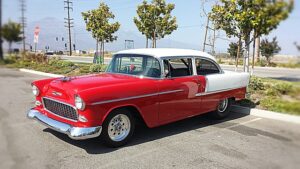Introduction
Adjusting a motorcycle carburetor is an essential skill for any motorcycle enthusiast or mechanic. A properly adjusted carburetor ensures optimal fuel-air mixture, leading to improved performance and fuel efficiency. In this article, we will dive into the step-by-step process of adjusting a motorcycle carburetor, covering everything from preparation to fine-tuning.
Preparation
Before diving into the adjustment process, it is crucial to gather the necessary tools and materials. Here are some of the items you will need:
Materials:
– Screwdriver set
– Carburetor cleaner
– Compressed air
– Clean rags
Tools:
– Service manual for your motorcycle model
– Safety goggles and gloves
Locating the Carburetor
The first step is to locate the carburetor on your motorcycle. Depending on the make and model, the carburetor can be found in various positions. Consult your motorcycle’s service manual to determine the exact location. Once located, ensure the motorcycle is turned off and the engine is cool before proceeding.
Identifying the Adjustment Screws
Most carburetors have two adjustment screws: the idle speed screw and the air/fuel mixture screw. The idle speed screw controls the engine’s idle speed, while the air/fuel mixture screw regulates the fuel-air mixture at low speeds. These screws are usually located on the side of the carburetor and can be identified by their distinct heads.
Adjusting the Idle Speed Screw
To adjust the idle speed, follow these steps:
1. Start by warming up the engine to its normal operating temperature.
2. Locate the idle speed screw and turn it clockwise to increase the idle speed or counterclockwise to decrease it.
3. Aim for a smooth and steady idle speed, typically around 1000-1200 RPM, but consult your motorcycle’s service manual for the recommended range.
4. Once the desired idle speed is achieved, turn off the engine and proceed to the next step.
Adjusting the Air/Fuel Mixture Screw
To adjust the air/fuel mixture, follow these steps:
1. Start by locating the air/fuel mixture screw on the carburetor.
2. Turn the screw clockwise until it is lightly seated. Be careful not to overtighten.
3. Slowly turn the screw counterclockwise until you reach the highest idle speed.
4. Fine-tune the air/fuel mixture by turning the screw slightly clockwise or counterclockwise to achieve the smoothest idle.
5. Repeat this process a few times, making small adjustments until you find the optimal setting.
Testing and Fine-Tuning
After adjusting the idle speed and air/fuel mixture, it is important to test the motorcycle’s performance and make any necessary fine-tuning adjustments. Here are some steps to follow:
1. Start the engine and let it warm up for a few minutes.
2. Take the motorcycle for a short ride, paying attention to its acceleration, throttle response, and overall performance.
3. If you notice any issues such as hesitation, rough idle, or poor performance, consult your motorcycle’s service manual for troubleshooting tips.
4. Make small adjustments to the idle speed and air/fuel mixture screws as needed, repeating the testing process until the desired performance is achieved.
Conclusion
Adjusting a motorcycle carburetor is a task that requires patience and attention to detail. By following the steps outlined in this article and consulting your motorcycle’s service manual, you can ensure that your carburetor is properly adjusted, leading to improved performance and fuel efficiency.
References
– motorcycleshows.com
– motorcyclistonline.com
– revzilla.com











